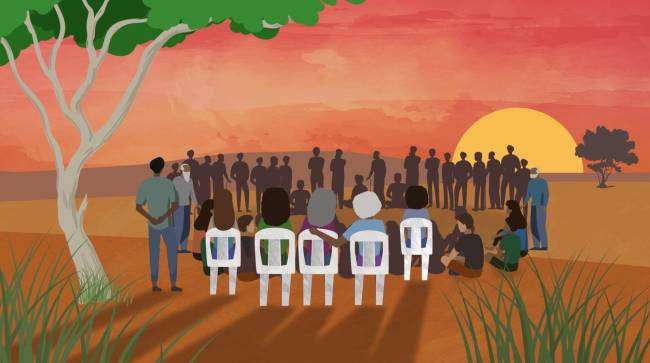New burial laws respect Aboriginal culture and protect burial sites
Date: Aug 4, 2022
Publication Type: Blog
In May this year the Northern Territory Government introduced a new bill to Parliament that acknowledges and respects Aboriginal customs and traditions for burials and exhumations.
It’s called the Burial and Cremation Bill 2022 and, if passed, would most likely become legislation later this year.
Currently, burial areas on Aboriginal land aren’t legally recognised and burial records for many communities do not exist.
Having a record of burials will protect burial sites and ensure future generations have a connection to their family history.
The new legislation will not interfere with traditional burial practices. Traditional Owners and native title holders who have traditional rights to bury on their land can continue to bury loved ones like they always have.
What will change?
The new legislation will allow for the following important changes:
- burial areas to be legally recognised on Aboriginal land,
- ensure records are kept for all burials,
- ensure future generations know where deceased loved ones are buried,
- a simple process to notify about a burial outside a cemetery, and
- recognise a person with cultural authority – a senior next of kin - as the decision maker for a deceased loved one.
- details about the deceased person,
- confirmation of death,
- GPS coordinates or a map of the burial site, and
- confirmation that the right people agree to the burial.
- a cemetery that is formally managed by a responsible entity,
- a burial ground with a representative for the land, and
- leaving an area undeclared.
- where burial areas should be recognised,
- the names and types of burials areas, and
- who should keep records for burial areas.
The new legislation was developed in consultation with key stakeholders, including Aboriginal organisations and Land Councils, to make sure it respects customary decision-making and Aboriginal customs and traditions.
Traditional Owners and other decision makers for land will have the final say about burials and whether burial areas are declared on their land.
Notifying about a burial
The new legislation will require a person to complete a simple form to notify about a burial outside a cemetery that provides:
If a burial site is in an undeclared area, the notification will also confirm that the burial does not impact on infrastructure, occupied buildings, waterways and other matters. This is to ensure that public health and the environment is protected.
If any details about a burial are culturally sensitive, that information does not need to be provided. A burial notification will be a flexible process. The notification is submitted to the Department of the Chief Minister and Cabinet (the Department) so that a burial record can be kept.
Managing burial areas
The new legislation will provide different options for managing areas:
These different options allow for the recognition and management of burial areas in a way that best suits the needs of each community.
After the Bill is passed, the Department of the Chief Minister and Cabinet will have discussions with Land Councils and decision makers for Aboriginal land to talk about:
Before declaring a burial area there will need to be written consent from the interest holders for the land – for example, the Land Trust for Aboriginal land.
If you have any questions about the Bill or would like to request an information session from the Department, you can email burials@nt.gov.au or call (08) 8995 5107.


